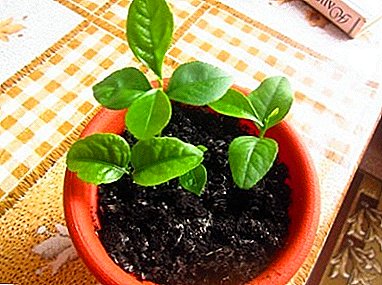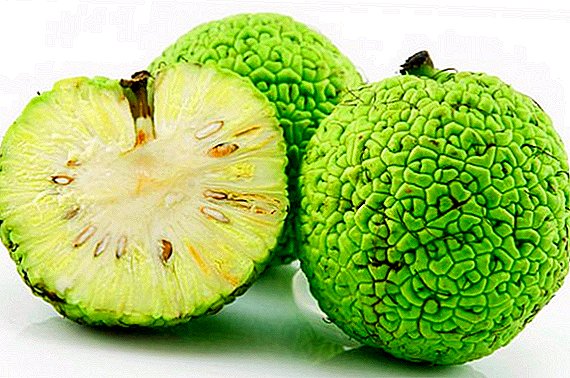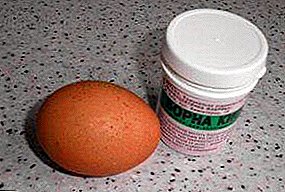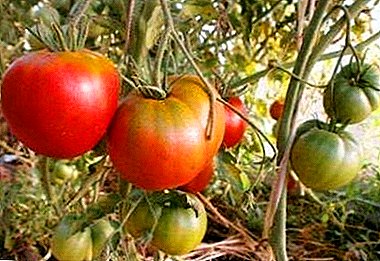
Lemon at home grows well and gives fruit.
But for normal development it is necessary to provide certain conditions. One of the care actions is timely transfer.
When it is necessary?
The lemon root system is limited by the size of the container in which it is planted. That he normally grew and fruited, regular transplantation is necessary.
The periodicity depends on the age of the tree.:
- 1-2 years old - it is not recommended to replant;
- 2-3 summer plants - twice a year;
- 3-4 year olds - once a year;
- 4-7 year olds - once every two years;
- Over 10 years old - transplanting every 9-10 years.
In addition to the planned, may be necessary. transplants as homemade lemon. They are carried out in the following cases:
- The size of the pot was chosen incorrectly and the soil began to sour. The plant needs to be transplanted into a new ground regardless of the season, otherwise it will die.
- Buying a plant in a small pot. This is especially necessary when the roots protrude from the drainage hole, which indicates a lack of space for their growth. If you do not transplant such an instance into a spacious container, the lemon will stop growing and die.
- Roots are visible around the trunk. This means that the root system has mastered the space of the pot and there is not enough space for further growth.
- Reducing the amount of fruit produced. The plant looks healthy, but the flowers are not tied. So the soil is depleted and needs to be replaced.
- A rotten smell is felt from the pot, fleas have appeared - evidence of souring, rotting of the roots.
Correct transplant
How to transplant lemon at home? Capacity will suit any. Main condition - A sufficient amount of drainage.
Take the size of a new vessel by 3-4 centimeters more.
A tree older than 6-7 years old, plant in a tub of wood with a narrowed bottom, and increase the size of the new tub by 6-8 centimeters.
Cooking tips

- Wrap a white, translucent pot with a thick cloth, otherwise the soil will overgrow with moss - the plant will suffer.
- Before using the ceramic pot, hold it for 2-3 hours in water, so that it is moistened and does not take water from the soil.
- Plastic container does not require additional processing. But the drainage layer in it should be more to avoid overwetting. Clay absorbs excess fluid, but plastic does not.
- Wooden frames recommended for tall specimens should be made of pine or oak. Other types of wood will rot at high speed, and you will have to transplant at the wrong time. Kadka burned from the inside to form a layer of charcoal on the inner surface. It disinfects the container and at the same time increases its resistance to decay.
What soil to plant?
Special soil can be found in the store. If there is no possibility of purchase, make a mixture of earth (2 parts), sheet turf (1 part), sand (1 part), humus (1 part).
Before landing sterilize it with the water bath method. Place the container with the ground in another, larger, filled with water. Heat half an hour.
Do not use soil from the garden. It is not loose and too sour. Lemon will not bloom and bear fruit.
The nutrients contained in the soil will be enough for a plant for half a year, then start feeding it with a special fertilizer for lemons.
About how to prepare the perfect soil mixture for lemon at home, we told here.
When to transplant?
When can I transplant lemon at home? The best time to transplant room lemon - the end of November and the beginning of December. Experienced growers are advised to transplant in February. The main condition is to get into the period between the waves of active growth.
Is it possible to transplant lemon with fruits?
It is impossible to transplant a lemon during flowering and fruit set. This will cause the buds to fall off, and you will be left without a crop.
rules
 How to properly transplant lemon in another pot at home? Lemon tree transplant in a new pot as follows.
How to properly transplant lemon in another pot at home? Lemon tree transplant in a new pot as follows.
- Cover the drainage hole with a convex shard; pour a layer of drainage mixture at least 5 centimeters onto it. Then pour a small layer of soil.
- Remove the tree from the pot, trying not to destroy the clod of earth. If the earth is covered with roots, the plant will be sick, as it will not be able to immediately adapt to new conditions.
- Cut off dried roots with a sharp knife or scissors. Do not tug or disentangle them.
- Place the tree in the center of the pot at the same level as in the old one.
- Cover the remaining space and compact the soil.
- Do not fall asleep to the root neck. The layer of earth above the roots should be no more than 5 centimeters.
- Thoroughly compact the soil, preventing the formation of voids.
- Pour a lemon and place it in a slightly shaded place.
- After a few days, place the plant in the same place as before.
Complete the drainage with a two-centimeter layer of peat, moss, or shredded dry manure. This technique will additionally protect the plant from waterlogging and give it nutrition.
Put the tree on the same side to the sun as it was before. Food and watering of lemon tree after transplanting.
First dressing spend no earlier than a month. The composition for fertilizer should include mineral and organic substances. About how and how to feed a lemon at home, read here.
Even careful transfer to a new pot is real stress for a tree. To get it used to new conditions faster, treat it with Zircon.
Watering produce settled or frozen water. Every day, with high air temperature and low humidity, in damp, cool weather - once every two or three days, in winter - once a week.
The amount of water is determined by the liquid, poured into the pan. One day after watering, drain the water from the pan into the pot.
In addition to watering homemade lemon need spray. Only soft water is suitable for spraying. In winter, spraying is not carried out (the rules for caring for homemade lemon in winter are found in a separate article)
Features transplant tall specimens
 Mature trees reach impressive sizes - up to 2-3 meters. Replanting them is difficult, but necessary. Experienced lemon growers advise doing this as follows:
Mature trees reach impressive sizes - up to 2-3 meters. Replanting them is difficult, but necessary. Experienced lemon growers advise doing this as follows:
- Wrap the trunk in the area of the root collar with a rag.
- Over it make a rope loop.
- Insert a stick into this loop.
- Putting the stick in the stand with one side, the other lift the tree.
- Fix this structure in the hanging position.
- Remove the old pot from the earth.
- Place a harvested pot with drainage and bottom layer of soil under the tree.
- Dip a lemon in it and fill it with empty space.
- Loosen the trunk of the fabric and water the tree.
If this method is not for you, partial soil replacement possible on a new nutrient soil. To do this, carefully remove from the tubs about half of the old soil and fill it with new.
If you follow all the recommendations for transplanting, lemon tree will delight you with a bountiful harvest not one year.
- How to plant a lemon from the stone and root the cuttings?
- How to care for a plant in the fall?
- How to form the crown of a tree?
- What are the benefits and harm of the fruit?
- What if a lemon sheds leaves?
And then the video clips on how to transplant a lemon in another pot in different stages of growth.












